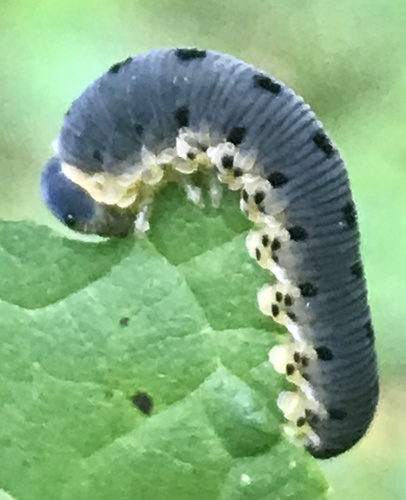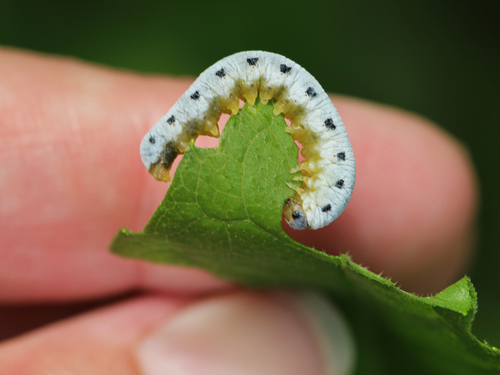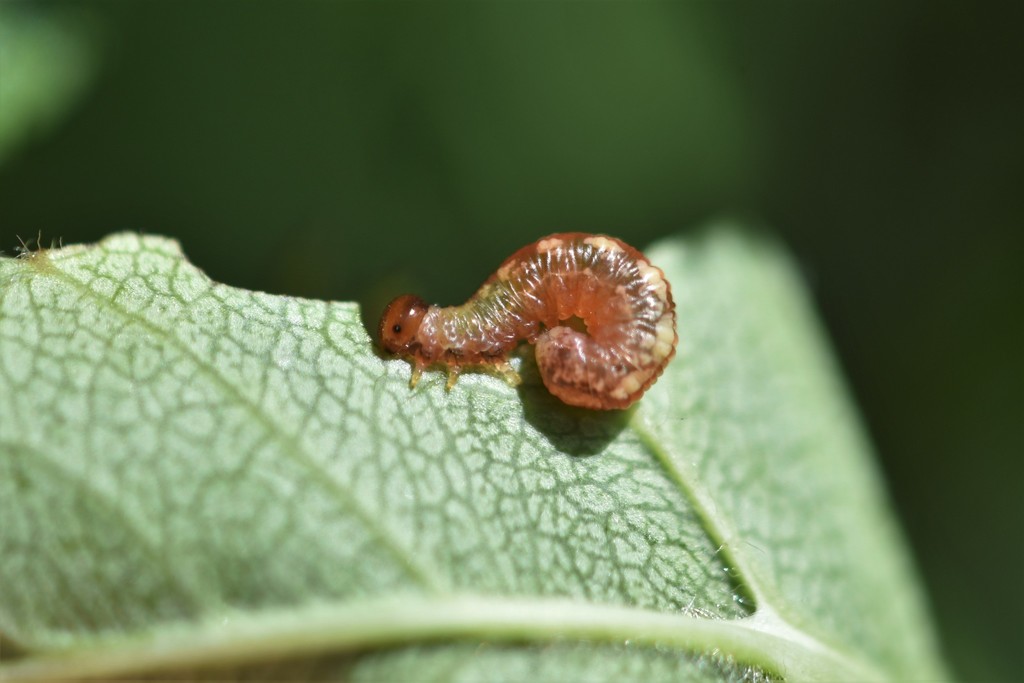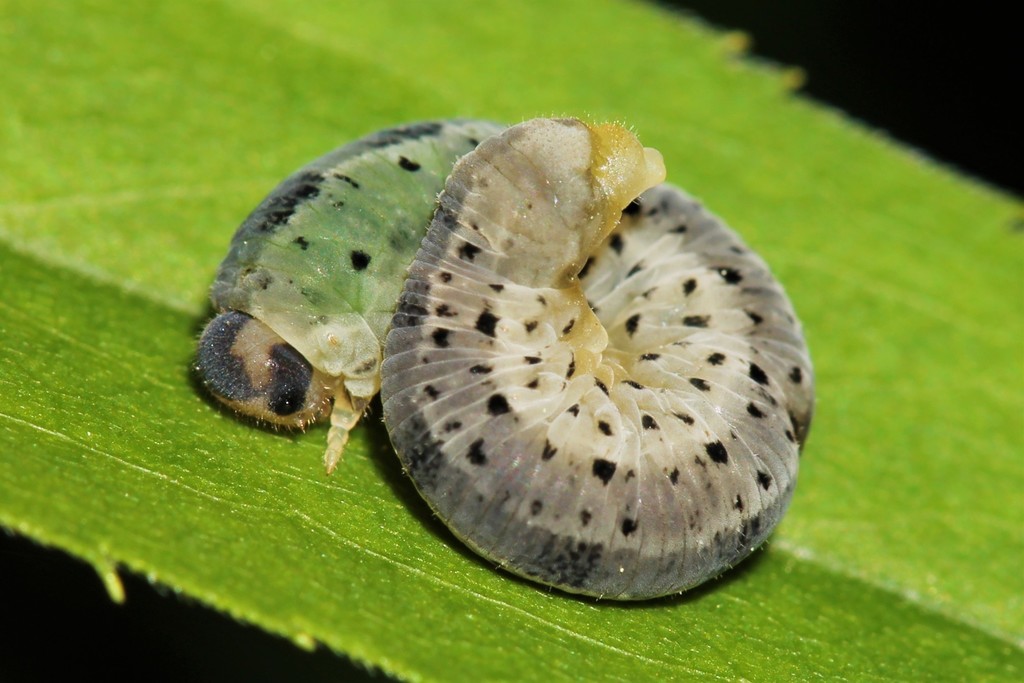Pinkish-purple tenthredinine




Apparent eonymph: Body pinkish purple, lighter ventrally, darker above spiracles, with diffuse dark median line dorsally. Setae on annulets 2, 4 & 7, pale tubercles (usually?) on annulets 2 & 4. Annulet 2 with a median dorsal black spot, a lateral black spot just above spiracle, and one on each of the subspiracular(?) and surpedal(?) lobes. Head orange-brown with median black spot on vertex.
Host: Unknown.
Distribution: NJ, PA, VA.
Note: BG individuals without tubercles may represent a separate species, a different larval instar, or intraspecific variation. Setae on annulet 7 are not totally clear on specimens with tubercles.
Grey-blue, yellow ventered tenthredinine on hickory







Late-feeding stages: Body greyish blue above spiracles, yellow below, prothorax with yellow collar behind head. Abdominal segments with median dorsal black spot spanning annulets 1 & 2, annulet 2 also with lateral black spot just above spiracle. Four black spots above each proleg: one below spiracle and one on each of the postspiracular, subspiracular, and surpedal lobes. Head bluish grey and pruinose(?), yellow below eyes.
Host: Carya sp., C. ovata.
Distribution: WI, IA, IL, MD, PA.
Note: May be Macrophya, at least two species of which are known from hickory (M. cassandra, M. nigristigma). Dyar's (1898) description of the larva of M. externa (a synonym of M. cassandra) does not match: that species is mainly white. Presumed larvae of M. nigristigma are described in a manner strikingly similar to these (Middleton 1922). Per Middleton's description, earlier instars may have a more brownish colour with whitish undersides, while the prepupa turns a "faintly yellowish gray" in the darker areas, with black spots turning "faint gray".
White-dusted tenthredinine






Late-feeding stages: Body white, legs, prolegs, and ventral surface pale yellow. Median dorsal black spot spanning annulets 1 & 2; lateral black spot just above spiracle spanning annulets 1, 2 & 3. Diffuse black spot above proleg on surpedal lobe. Head bluish grey and pruinose(?), yellow below eyes.
Host: Verbesina, which has possibly been mistaken in some linked observations for nettle, false nettle, and maybe dogwood.
Distribution: NE, IL, MI, OH, PA, NJ, MD, WV, TN
Note: Same as those collected on BugGuide.











































